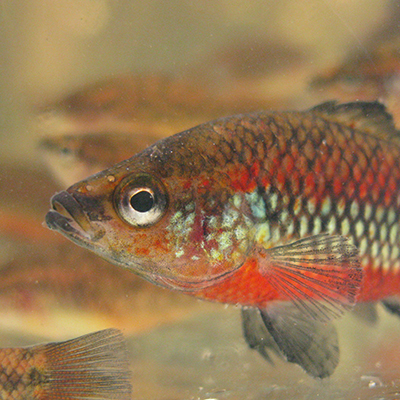You can keep and breed them in a tank that is 3 foot long of bigger. If you have a pond that is 3 foot or bigger that will do. They are fine in Perth water, which is soft but has a pH well above 7.0. They eat just about anything and breed readily during the warmer weather. They do need a cool period over winter but are fine at 30C+ in summer.
If you want pygmy perch, go and collect your own. Don't buy them from the shop because they are not clean and usually very stressed out. This is due to the government banning the collection and sale of these fish in WA. The only fish that are meant to be for sale in this state have come from over east. The fish are caught here, sent over east, and then bought by shops here. It's stupid and doesn't help anyone or the fish.
You can find pygmy perch in any river or creek in the southern half of this state. North of the great dividing range is one species, and south is another species that looks almost identical. There are a couple of other pymgy perch in the south-west of WA too. Dave Morgan at Murdoch University has done research on them and reclassified them. There's a number of books on them and ANGFA WA members have some info about them.
If you want to collect some, get a bait trap from BigW or Kmart or a fishing store, put some dry fish pellets in it and drop it in the canning river. Wait 30 minutes then lift it up and carefully put the contents into a container of aerated river water. If you go south of Perth, you can pull over on the side of the road and drop a trap in there and get them. Same north up to GinGin.
There are different colour varieties and ones up by GinGin tend to have a gold sheen over a brown body. The Gardner River West? near Pemberton? had a stunning dark green sheen on black body. If you go to Walpole (400km south of Perth), there is a place called Fernhook Falls about 30km north of Walpole on the South-west Hwy. There are shallow pools along the side of the road, which are home to several species of pygmy perch, Galaxiellas and salamanderfish.
This link is for the Canning River near Araluen Botanic Park. You go along Croyden Rd and turn right down McNess Drive, and just before the bridge on the left hand side is a gravel area where you can park (or used to be able to park, been a few years since I was there). You can walk down to the river and put traps in there or follow the river upstream a few hundred meters and put it in a pool. In spring and summer there are snakes (dugites and tiger snakes) so be careful where you walk. You can also collect pygmy perch and other native fishes during autumn and winter. There are pygmy perch, galaxias occidentalis, Bostockia porosa (nightfish), Tandanus bostocki (catfish) and usually Gambusia.
A word of caution when you go down McNess Drive, do it slowly and carefully because it is a really tight curve and its downhill.
âââââ · Botanical garden

www.google.com.au
---------------------
This link is for the South-west Hwy in Walpole. Beardmore Rd will take you to Fernhook Falls but the pools with fish in are all along the South-west Hwy in that area and you don't need to go to Fernhook Falls for the fish. However, Fernhook Falls is a really lovely spot to visit, have a picnic and photograph. The drawback is the 5km of corrugated peagravel on Beardmore Road you have to traverse to get to the falls. It's pretty unpleasant driving along that road but the falls are nice.
A word of caution, the pools along Beardmore Rd is where I found a decomposing skull in a plastic shopping bag. If you hop in the water, wear waders and have a bottle of alcohol to disinfect afterwards. And be wary of strangers, most are nice but some are serial killers.
âââââ · Campground

www.google.com.au



